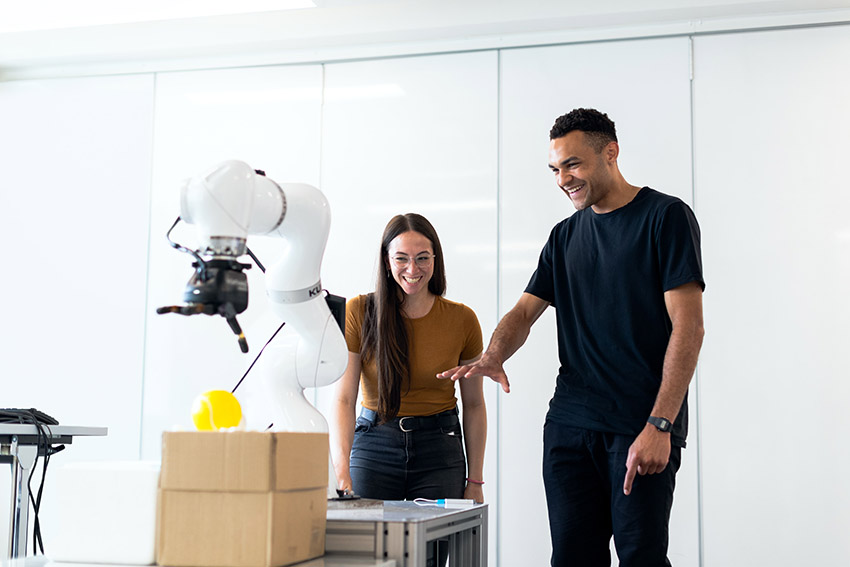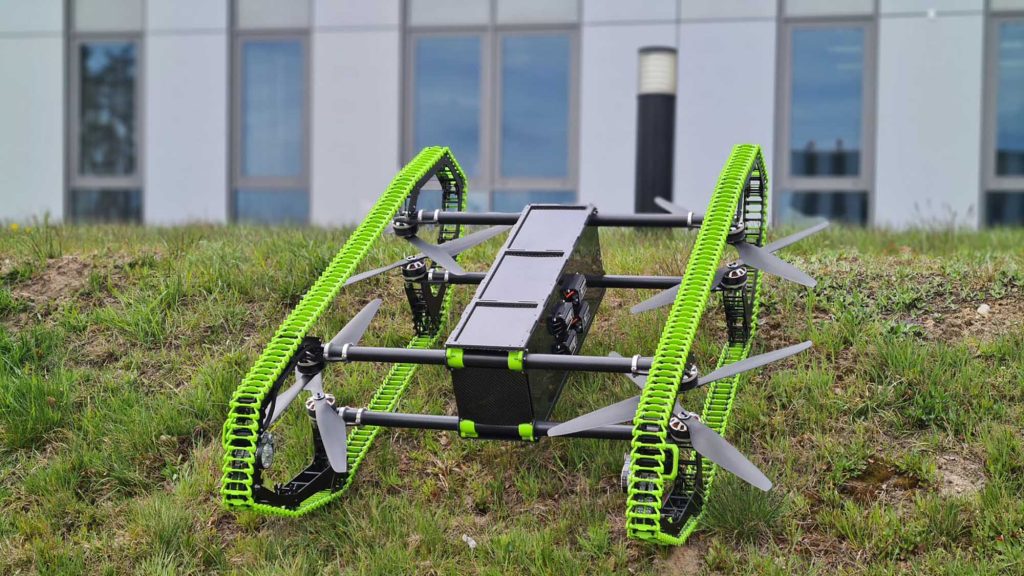LUT is a mid-sized forerunner science university in Finland that conducts a strong academic research in co-operation with industrial companies as well as provides higher education in the selected versatile focus areas. LUT has been selected amongst the 20 most promising challenger universities in the world. In the 2021 THE Impact Rankings, LUT was one of the world’s top 300 universities out of 1115 and in the global top 10 for climate action (Sustainable Development Goal 13).
LUT is organized by a multidisciplinary approach in three schools, those being School of Energy Systems, School of Engineering Science and School of Business and Management. Together these schools are solving challenges related to the strategic goals of LUT; energy, air, water and responsible business. They do science with a purpose, seeking new solutions with which LUT can help society and businesses in their sustainable renewal.
LUT has a strong experience in combining complex and sophisticated technology and industrial business perspective in a close co-operation with manufacturing companies operating especially in the area of discrete manufacturing in versatile branches of industries. LUT has been ranked as the best university in business technology cooperation in Finland. They combine knowledge on advanced design, manufacturing, and processing together with business and service design to create value in the digital economy and driving for the sustainable growth.
LUT is an entrepreneurship-friendly university. As an indication of this, several commercialization projects and spin-off companies have been launched based on the results of the research projects.
Interview with Kirsi Kokkonen, Sari Laitinen, Päivi Aaltonen, Suraj Jaiswal and Aino-Maria Hakamäki from LUT University, Finland.

Easy Engineering: What can you tell us about market trends / customer needs?
Manufacturing industry is going through a strategic transition from equipment, technology and commodity based business and traditional business models towards data-based business and service and solution -based business models. Key enablers for this transition have been different technological drivers, such as the Internet of Things (IoT), Artificial Intelligence (AI), fast development of sensor technologies, simulation, and digital twins as well as autonomous systems that support varying degrees of higher-level decision-making capability.
When the technological advances are combined with the utilization of data, they enable e.g. real-time value chains, new digital products, services and solutions, and customer-oriented business models. To be able to do this in a successful manner, we need more thorough customer understanding; transformation from technology-driven development towards customer-oriented approach demands a change in the mindset of manufacturing companies. In addition, the strategic transition cannot be looked only from one company’s perspective, but increasingly, the services and solutions are co-developed between several organizations. The manufacturing companies´ business environments are transforming towards more intelligent and adaptive ecosystems; intelligent autonomous systems, human-machine collaboration, data sharing in value chains and factory environments, advanced analytics, and new business models, providing on-demand customer-oriented offerings.
E.E: What are the most innovative products marketed?
To be ready to respond to the recent changes and trends taking place in the current business environment, LUT has been organized into several multidisciplinary research platforms that are targeting to combine expertise and perspectives from different technological fields and business, in a close collaboration with the companies and economic life. Through the platform’s research, we focus on influencing the following UN´s sustainable development goals in particular; 8: Decent work and economic growth, 9: Industry, innovation and infrastructure, 12: Responsible consumption and production, 13: Climate action and 17: Partnerships for the goals.
MORE SIM, established with the vision of becoming a preeminent world-leading research platform, is an example of such. The MORESIM platform consists of research expertise focusing on machine design, strategic and innovation management, IoT solutions, future materials, performance management and intelligent solutions. We delve into concepts such as Industry 5.0 Ecosystem, Autonomous Machines & Fleets, Regenerative Industry, Digital Humans, and Virtualized Environments. Our vision is to take simulator-driven design and manufacturing to the next level by introducing community-based real-time simulation tools that represent real-world functionality. As an open platform, we work to strengthen both continuous renewal of businesses and customer value by developing simulation technology based on sustainable growth, digital economy, advanced design, and manufacturing.

E.E: What’s the news about most innovative products?
For this article, we have chosen three research projects from MORESIM platform for more thorough presentation. The three projects represent the multidisciplinary, multidimensionality and different levels of maturity, and they are all conducted in a close collaboration with industrial companies. We support companies from the early fuzzy front-end development via technological prototypes towards the markets and commercialization. This builds a strong basis for our collaboration also with the industry partners and other research organizations.
In the project HUUVER (Hybrid UAV-UGV for Efficient Relocation of Vessels), we have participated in a consortium of seven European partners, which has developed a prototype UAV-UGV hybrid platform. This patented technical solution activates flying and driving capabilities in one compact and highly integrated autonomous drone. For interfacing with an end-user, the HUUVER solution also includes a core management system with features like mission planning navigation, guidance and control as well as an end-user mobile application enabling mission demand and launch control. The HUUVER platform is currently tuned to be successful operated in professional missions for Search & Rescue, Patrolling & Monitoring and Industrial Intralogistics. This human machine interface will ease the missions which normally would need human labor in hard conditions and challenging environments.
The AIToC– project is a cumulation of a decade of work in the manufacturing industry, systematically building a comprehensive, scalable solution that takes into consideration all aspects of large-scale manufacturing – product design, resource and supply chain management, and physical humans in the assembly line. We can model the production of a complex machine while taking into consideration sustainable design, raw material supply changes, even the height differences between factory workers – before a single step has been taken towards a physical product. Considering user needs in a virtual test environment enables significantly increased radical innovation creation, rapid and cost-effective validation of innovation, and the novel co-evolutionary design of machinery and processes. Further, fully virtual environments offer the potential of functioning as transferrable test beds for other industries. Via virtual environments, the understanding of human-machinery virtual environment functions can be improved and the potential of enhanced disruption advanced.
The XGen-DigiTwin (Next Generation Digital Twin Solutions) project is to support and study the commercialization opportunities of the Kalman filter based fusion technology. In other words, an information fusing technique is followed in the XGen-DigiTwin technology. This can boost tailored machine performance, and consequently, it can overcome scalability issues for predictive maintenance, reduce extensive use of sensors, provide cutting edge capabilities, and assist machine operators for high machine productivity.

E.E: What estimations do you have for the near future?
The transition from Industry 4.0 to Industry 5.0. expands the scope to issues such as environmental sustainability, human-centricity and resilience. Industry 5.0 provides a vision of industry that, in addition to the goals related to efficiency and productivity, also reinforces the role and the contribution of industry to society. It supports the green and digital transformation also called as twin transition. In Industry 5.0, we can create new types of business ecosystems in which the value creation enabled by digitality is combined into customer-driven innovation, production, and service processes.
In the twin transition, advances of digitalization support the achievement of sustainable development goals in many different ways; by promoting energy efficiency, productive efficiency and productivity, operational sustainability, recyclability, and traceability of materials. The market for twin-transition solutions is growing fast, and not only because of politically set goals for climate protection. Customers are changing their consumption habits, creating a growing demand for products made in accordance with the principles of sustainability. At the same time, more and more commodities are needed, and the production of them in a resource-efficient way is essential to ensure the carrying capacity of the planet. We can see that through human-machine interface, Industry 5.0 can become Society 5.0, increasing the well-being of the society and environment, and keeping businesses alive.
Based on the experience gathered from the ongoing projects, we can see our next strategic level goals to be in the research areas of human machine interface, digital twin utilization in industrial services, and operator well-being and simulation-based tools for preventing accidents in industrial settings. The question remains – how far can we push these developments and what do we discover? At LUT and MORE SIM, we are a community where curious people inspire curious people. The curious dive deep into their passion and develop their thinking daily. Without curiosity, we cannot change the world.
